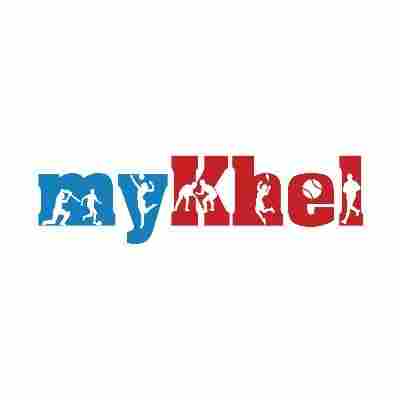10 Incredible Archaeological Discoveries Rewriting History - Explore groundbreaking findings challenging our past beliefs
New Delhi: The world of archaeology is constantly offering us glimpses into the
past, rewriting our understanding of human civilization. From ancient settlements to forgotten technologies, each discovery adds a new layer to the rich tapestry of history.
Here, we explore ten such incredible finds that have challenged conventional wisdom and reshaped our knowledge of the past.
Göbekli Tepe: Rewriting the Origins of Religion
For centuries, historians believed that complex religious rituals emerged after the development of agriculture and settled life. Göbekli Tepe, located in Turkey, shattered this theory. Dating back over 11,000 years, this site features monumental stone pillars adorned with intricate animal carvings.
These structures predate settled agriculture, suggesting that religious practices may have been a catalyst for the development of civilization rather than a consequence of it. This discovery has completely transformed our understanding of the origins of religion and complex societies.
The scale and sophistication of Göbekli Tepe are truly astounding, forcing archaeologists to reconsider their timelines about when humans began organizing themselves for large-scale, symbolic projects.
It points to a level of social organization previously thought impossible for pre-agricultural societies.
Denisovans: Adding a New Branch to the Human Family Tree
The discovery of the Denisovans in a Siberian cave added a new chapter to the story of human evolution. Through DNA analysis of fossil fragments, scientists identified a distinct group of hominins who coexisted with Neanderthals and early humans.
Evidence suggests that Denisovans interbred with both groups, leaving their genetic mark on modern populations, particularly in East Asia and Oceania. This discovery challenges the linear model of human evolution and highlights the complex interactions between different human species.
The Denisovan story shows that human history is more complicated than we once thought, involving multiple species and complicated interactions. This discovery also shows the power of DNA in studying human history.
The Antikythera Mechanism: Ancient Astronomical Computer
Unearthed from a Roman-era shipwreck off the coast of Greece, the Antikythera Mechanism is an incredibly complex device dating back to the 2nd century BC.
Initially dismissed as a simple clock, detailed analysis revealed that it was an analog computer capable of predicting astronomical events with astonishing precision.
Its gears and dials tracked the movements of the sun, moon, and planets, demonstrating a level of scientific and technological sophistication previously thought unattainable by the ancient Greeks. The Antikythera Mechanism demonstrated that ancient civilizations are capable of very complex ideas.
It suggests that technologies were lost or not widely adopted for reasons that are still not entirely clear.
The Lost City of Heracleion: A Drowned Cosmopolitan Hub
Submerged beneath the waters of the Mediterranean Sea, the lost city of Heracleion was once a bustling port city in ancient Egypt.

Rediscovered in the early 2000s, the city's ruins reveal a vibrant multicultural center that thrived for centuries before succumbing to earthquakes and rising sea levels.
Archaeologists have unearthed colossal statues, intricate religious artifacts, and countless everyday objects, providing invaluable insights into the city's rich history, trade connections, and cultural interactions.
Heracleion's rediscovery shows us a piece of a world that was lost, preserved in the depths for centuries. It also tells us the story of how sea levels had changed in the past, something that is very relevant in our world today.
The Vinland Map: A Viking Voyage to America?
The Vinland Map, purportedly dating back to the 15th century, depicts a portion of North America labeled "Vinland," seemingly proving Viking exploration of the continent centuries before Columbus.

However, the map's authenticity has been hotly debated, with many scholars questioning its origins and the methods used to create it. Recent analysis of the map's ink has cast further doubts, suggesting that it was likely a 20th-century forgery.
While the Vinland Map remains controversial, it continues to spark debate and highlights the complexities of verifying historical documents. Even with modern technology, it is always hard to find the correct information.
The discussions around the authenticity of the map show us the value of studying the past.
The Dead Sea Scrolls: Illuminating Ancient Jewish Life and Religious Thought
Hidden away for millennia in caves near the Dead Sea, the Dead Sea Scrolls are a collection of ancient Jewish texts that offer an unparalleled glimpse into Jewish life and religious thought during the Second Temple period.
The scrolls include fragments of the Hebrew Bible, as well as previously unknown religious and philosophical works. They shed light on the diversity of Jewish beliefs and practices at the time and provide valuable context for understanding the origins of Christianity.
The scrolls show the very important history writings. It tells us about the beliefs and traditions that shaped the modern world. It shows what the power of very old documents can be.
Sima de los Huesos: Unveiling Neanderthal Burial Practices
The Sima de los Huesos ("Pit of Bones") in Spain is a cave site containing the remains of dozens of early Neanderthals.
The discovery of so many individuals in one location suggests that Neanderthals may have engaged in deliberate burial practices, challenging the long-held view that they were incapable of symbolic thought or complex social behavior.
This finding adds a new dimension to our understanding of Neanderthal culture and intelligence. Finding many remains together shows that the Neanderthals may have had complicated traditions. It changes how we think about the social behaviour of our ancestors.
The Staffordshire Hoard: A Treasure Trove of Anglo-Saxon Metalwork
Unearthed in a field in Staffordshire, England, the Staffordshire Hoard is the largest collection of Anglo-Saxon gold and silver metalwork ever discovered. The hoard consists of thousands of items, including sword fittings, helmets, and religious objects, dating back to the 7th century AD.
The Hoard shows the wealth and craftsmanship of Anglo-Saxon's time. It also shows about all the violence and battles of that era.
The Terracotta Army: Guarding the Tomb of China's First Emperor
The Terracotta Army discovered near Xi'an, China, is a massive collection of life-sized terracotta sculptures depicting the army of Qin Shi Huang, the first Emperor of China. The army was buried with the emperor in 210–209 BC with the purpose of protecting the emperor in his afterlife.
The Terracotta Army shows the power and money of the kingdom. It also shows the importance that the emperor placed on the afterlife.
The Blombos Cave Engravings: Early Evidence of Human Symbolism
The Blombos Cave in South Africa has yielded some of the earliest evidence of symbolic thinking. The finds are a carved piece of ochre, dating to approximately 73,000 years ago. This proves that early humans were very skilled.
It teaches us that it is important to study the early achievements of humans.
AI Generated Content. Glance/InMobi shall have no liability for the content













